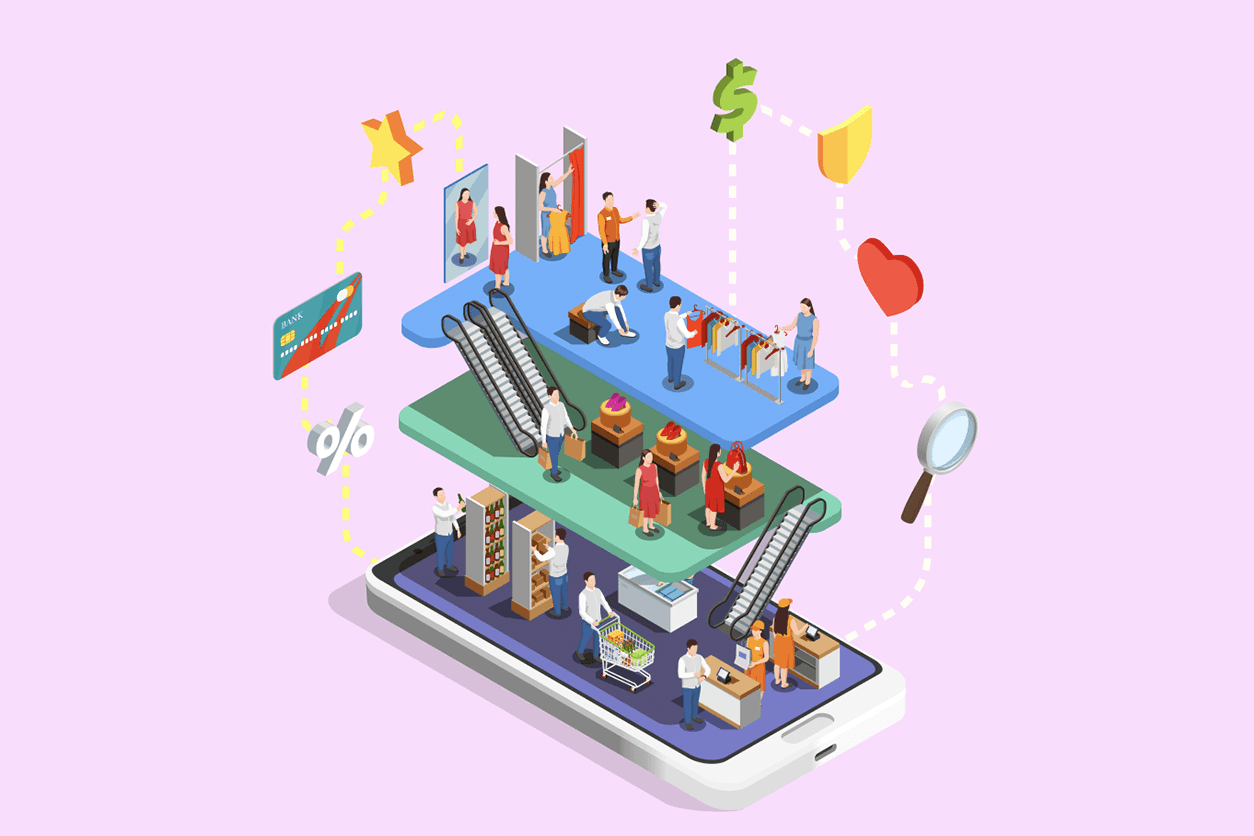How Gamification is Transforming Retail Stores: Boosting Engagement, Loyalty, and Sales

Have you ever wondered why your favorite retail store offers you reward points, and how collecting them can elevate you to new levels or help you get items for free? The answer lies in gamification. This strategy introduces game-like elements such as points, badges, leaderboards, and challenges into the shopping experience, making it more engaging and rewarding.
1. Evolution of Retail Gamification
Previously, local stores often used simple reward points or special loyalty cards to track customer loyalty. But in today's global market, businesses, including retail stores, need sophisticated systems to keep customers happy and engaged on a global scale. A prime example of this is Shell petrol stations, where you not only get fuel but also accumulate reward points that can be used in their retail stores. This approach not only drives fuel sales but also boosts grocery purchases, effectively using gamification to enhance customer loyalty and engagement.
2. Enhancing Customer Experience
Gamification in retail is not just about rewards; it's about creating an engaging experience. Imagine being recognized as a "prime customer" who frequently shops at a store. This recognition, though it doesn't come with a paycheck like a job promotion, still makes you feel appreciated. Retailers use these roles in their loyalty programs to offer superior rewards and exclusive deals, encouraging you to keep coming back and preserve your status.Customers who may not be as engaged still strive to reach new positions within the loyalty program. The allure of being just a few points away from a reward can drive them to choose your store over competitors, ensuring repeat business and customer retention.
3. Key Gamification Strategies for Retail
Reward Programs and Loyalty Schemes: Traditional loyalty programs are enhanced with levels, badges, and point systems. Customers earn points for every purchase, which can be redeemed for discounts, freebies, or exclusive offers. Progressing through levels and earning badges provides a sense of achievement, encouraging continuous shopping.
Challenges and Competitions
Retailers can create challenges that motivate customers to perform specific actions, such as making a purchase, writing a review, or referring to a friend. Competitions, like leaderboards showcasing top buyers, spur friendly rivalry and drive higher engagement and spending.
Interactive Mobile Apps
Mobile apps offer a perfect platform for gamification. Retailers can design interactive apps featuring games, quizzes, and scavenger hunts related to their products. These activities entertain customers while educating them about products, leading to informed purchasing decisions.
Social Sharing and Referrals
Encouraging customers to share their purchases and experiences on social media can be gamified by offering rewards for social interactions. Points or discounts for referrals and social shares extend the retailer's reach and attract new customers.
Personalized Recommendations and Rewards
Using data analytics, retailers can offer personalized recommendations and rewards based on customers' shopping habits and preferences. Tailored experiences make customers feel valued and understood, increasing the likelihood of repeat purchases.
4. Benefits of Gamification in Retail
Increased Customer Engagement
Gamification turns shopping into an engaging activity. Customers spend more time exploring products and interacting with the brand, leading to increased sales opportunities.
Higher Customer Retention
Gamified loyalty programs and rewards encourage repeat purchases. Customers who feel rewarded and recognized for their loyalty are more likely to return, fostering long-term relationships.
Enhanced Brand Loyalty
Enjoyable and rewarding shopping experiences build stronger emotional connections with customers. Loyal customers are more likely to make repeat purchases and advocate for the brand.
Boosted Sales and Revenue
Gamification drives customer behavior in ways that directly impact sales. Increased basket sizes, more frequent purchases, and higher conversion rates contribute significantly to a retailer's bottom line.
Valuable Customer Insights
Gamification generates valuable data on customer behavior and preferences. Retailers can use this data to refine their strategies, personalize offers, and optimize the overall shopping experience.
5. Actual Case Studies
Starbucks Rewards
Starbucks has successfully gamified its loyalty program by offering points (stars) for every purchase, redeemable for free drinks and food items. The app also includes challenges and bonus star opportunities, encouraging frequent visits and higher spending.
Nike Run Club
Nike's app incorporates gamification to motivate users to run more frequently. Users set goals, participate in challenges, and earn badges for achievements. This engagement promotes physical activity and drives sales of Nike products.
Sephora Beauty Insider
Sephora's loyalty program rewards customers with points for purchases and engagement activities, such as writing reviews and attending events. Points can be redeemed for exclusive products and experiences, fostering loyalty and repeat business.
Conclusion
Gamification offers a compelling opportunity for retailers to enhance customer engagement, drive sales, and build brand loyalty. By incorporating game-like elements into the shopping experience, retailers can transform routine transactions into enjoyable and rewarding activities. As the retail landscape continues to evolve, leveraging gamification strategies will be key to staying competitive and thriving in the digital age.